What Is A Animal That Starts With L
Animals that start with 50: list with pictures and facts. Observe astonishing animals offset with l. Follow the links for further information!
***
Animals That Start With 50: Pictures & Facts
On this page you'll find a list of amazing animals beginning with l, together with pictures and interesting facts about each fauna.
Yous can find out more nearly many of the animals (and run across pictures and videos) by post-obit the links.
Detect animals showtime with …



























- Master list page: Animals A to Z
- Become an animal practiced: Animals: The Ultimate Guide To The Animal Kingdom
Listing of Animals Beginning With L
Lacewing

Lacewings are insects that have two pairs of frail, veined wings. There are many different lacewing species. The most well-known are members of the family Chrysopidae, otherwise known as green lacewings.
Lacewings are members of the order Neuroptera – a big group of insects that has been around since before the dinosaurs!
Ladybug / Ladybird

Ladybugs (known as ladybirds exterior of North America) are modest beetles known for their brightly-colored, spotted fly cases. There are over 6,000 species of ladybug and they are found all effectually the earth.
Ladybugs feed on insects such equally aphids (greenflies) which tin be harmful to crops. For this reason gardeners are frequently pleased to see ladybugs on their vegetables.
Some ladybug species, such as the harlequin ladybird, are invasive species. Although they were originally introduced to help farmers, their presence tin can be harmful to native ladybug species.
Lammergeier
- Scientific Name: Gypaetus barbatus
- Conservation Status: Near Threatened

The lammergeier is a vulture that is plant in mountainous regions in Europe, Asia and Africa. The species is also known as the bearded vulture. Although the lammergeier's range (the expanse in which information technology is plant) is large, the species is very rare and information technology is idea that there are fewer than 7,000 lammergeiers left in the wild.
The lammergeier feeds on feces. Its breadbasket juices are highly acidic, and can break down big bones within 24 hours.
Leafcutter Ant

Leafcutter ants are large ants found in Central and South America. They live in huge colonies which can contain up to 8 million insects.
Leafcutter ants collect leaves and other vegetation and bring it to their nests. Here, the plant matter is chewed and used to grow fungus in an area of the nest known as a 'fungal garden'. The fungus is eaten by the queen and the other ants that don't leave the nest.
- You can detect out more about leafcutter ants hither: Leafcutter Ant Facts
Leatherback Bounding main Turtle
- Scientific Proper name: Dermochelys coriacea
- Conservation Status: Vulnerable

The leatherback sea turtle is the world'due south largest turtle and the fourth-heaviest living reptile (merely three crocodilians are larger). The leatherback sea turtle gets its name from its thick, leathery carapace (vanquish). It is the simply sea turtle non to have a hard shell.
Leatherback turtles migrate long distances between their breeding and feeding grounds, and are establish in temperate waters all around the earth.
The leatherback is the just body of water turtle in the family Dermochelyidae. The 6 other ocean turtle species are in the family unit Cheloniidae.
- You can observe out more about leatherback turtles hither: Leatherback Turtle Facts
Leech
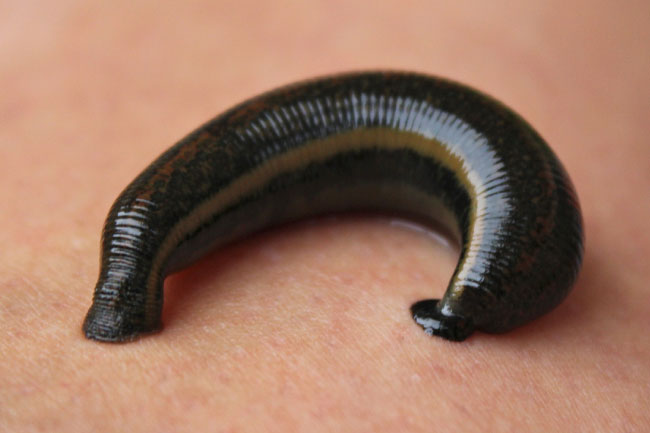
Leeches are annelids (ringed worms) in the subclass Hirudinea. They have a sucker at either terminate of their bodies.
Some species of leech attach themselves to other animals (including humans) and – using specially adapted mouthparts containing hundreds of tiny, sharp teeth – potable their blood!
In the past, doctors used leeches to try to cure their patients of various ailments. It was idea that having blood removed by a leech would assistance restore the trunk's natural residual.
Lemming

Lemmings are pocket-sized Arctic rodents. They are in the tribe (a grouping of related animals) Lemmini. Lemmings are herbivorous (institute-eaters), and eat a variety of found matter including leaves and shoots.
Occasionally, under favorable conditions, lemming populations can all of a sudden grow dramatically. These population booms cause large numbers of lemmings to migrate away from their birthplaces.
These large-scale migrations gave rise to the myth that large groups of lemmings throw themselves off cliffs.
- Y'all can find out more about lemmings here: Lemming Facts
Lemur
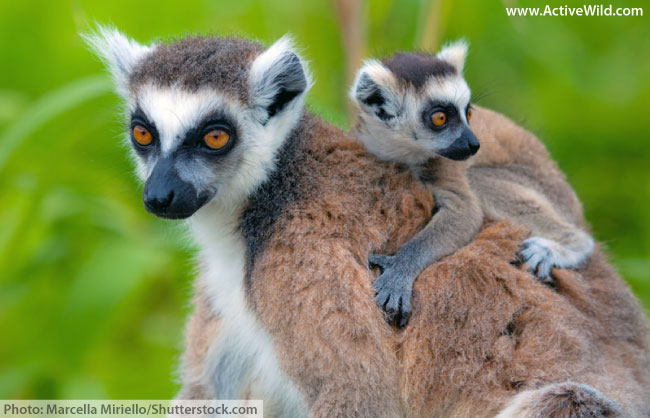
Lemurs are primates that are only constitute on the island of Madagascar. There are around 100 species of lemur, many of which are now endangered. The smallest lemur is the mouse lemur; the largest the indri.
- You lot tin can find out about ring tailed lemurs here: Band Tailed Lemur Facts
Leopard

- Scientific Proper name: Panthera pardus
- Conservation Status: Vulnerable
The leopard is the fourth-largest true cat species. Its distinctive glaze is golden-yellow and covered in spots called rosettes (they're more similar 'rings' than 'spots'). The leopard is stealthy and stiff. It preys on animals such equally antelopes and deer.
The leopard is extremely strong. In order to prevent other predators from stealing its food, the leopard can drag its prey up a tree.
- Y'all tin can find out more about leopards hither: Leopard Facts
Leopard Seal
- Scientific Proper name: Hydrurga leptonyx
- Conservation Condition: Least Concern
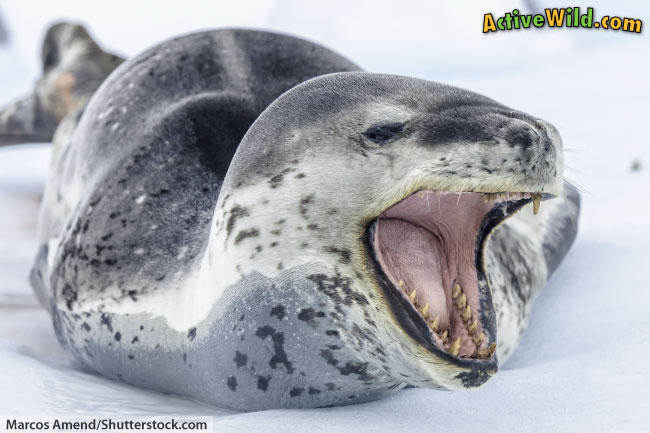
The leopard seal is a large seal found along the coastline of Antarctica. Dark, leopard-similar spots on its chest and undersides give the species its name. The leopard seal is a fearsome predator. Information technology preys on penguins and even on other seals.
- You can notice out more about leopard seals here: Leopard Seal Facts
Limpet

Limpets are pocket-size, shelled animals that adhere themselves to rocks and feed on algae. Near limpets are found in saltwater environments, although there are limpets that live in freshwater.
Limpets are members of the course (a large group of related animals) Gastropoda. Other gastropods include snails and slugs.
Lion
- Scientific Proper noun: King of beasts
- Conservation Status: Vulnerable
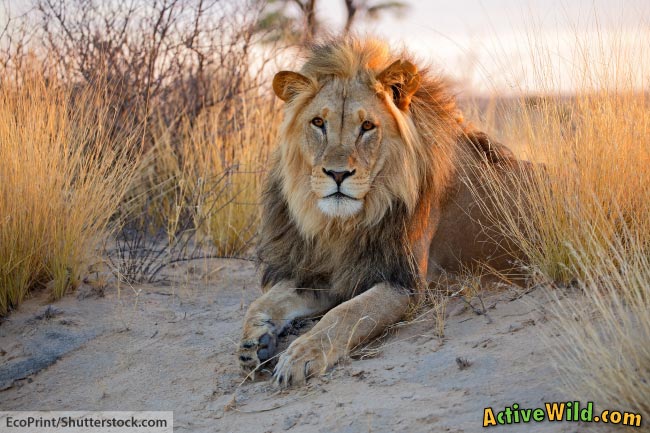
The lion is the second-largest species of cat. Only the tiger is larger, although in that location is a great deal of overlap in the species' sizes (i.e. many lions are larger than tigers).
Most wild lions live in Africa. The just lions establish in the wild outside of Africa live in India's Gir Forest National Park and Wild animals Sanctuary. A 2015 survey found that there were 523 lions present in this area.
Lions are able to live in a wide range of habitats, simply fugitive tropical rainforests and the interior of the Sahara desert.
The lion is more social that about other cats. It lives and hunts in groups called prides.
- You can discover out more about lions hither: King of beasts Facts
Llama
- Scientific Proper noun: Lama glama
- Conservation Status: Domestic

The llama is a fellow member of the family unit Camelidae, otherwise known as the camel family. The llama was originally domesticated in South America many hundreds of years ago. Today it is farmed for its wool not but in South America but also in many other parts of the world.
Lobster

Lobsters are large crustaceans that live in the bounding main. Their long bodies are protected by a hard exoskeleton (i.e. an external skeleton). Lobsters accept five pairs of legs. The forepart three pairs of legs all have claws, although those on the foremost pair are much larger than the others.
Lobsters utilize their long antennae to feel their fashion around the nighttime ocean flooring.
Locust

Locusts are a type of grasshopper. (Grasshoppers are insects with long bodies and well-developed hind legs that enable them to jump long distances.)
Under certain weather condition locusts will swarm. Swarming usually occurs during periods of fast vegetation growth post-obit droughts. The normally alone locusts flock together and rapidly multiply, forming huge, wandering groups that can cause immense damage to crops.
Loggerhead Sea Turtle
- Scientific Proper noun: Caretta caretta
- Conservation Status: Vulnerable
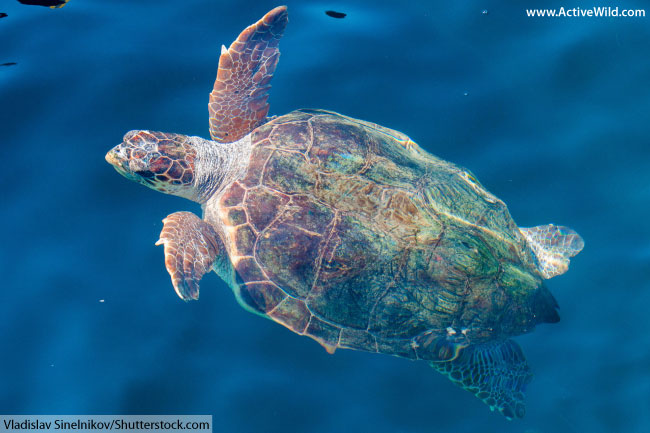
The loggerhead sea turtle is a member of the family Cheloniidae. It is the largest of the 5 other species in this family unit, only is non as big as the leatherback sea turtle (which is in the family Dermochelyidae).
The carapace (shell) of the loggerhead ocean turtle ranges in color from orange to brown. The plastron (the hard 'breastplate' covering the underside of the turtle) is yellow. The adult turtle's large size and difficult beat keep it safety from virtually body of water predators.
- You can find out more about sea turtles here: Sea Turtle Facts
Loris

Lorises are nocturnal primates that live in the tropical forests of due south and southeastern Asia. There are ii types of loris: the slender lorises in the genus Loris, and the slow lorises in the Genus Nycticebus.
Before leaving their young, adult lorises lick the infants, roofing them with saliva that is mildly poisonous. This deters other animals from preying on the immature.
Lungfish
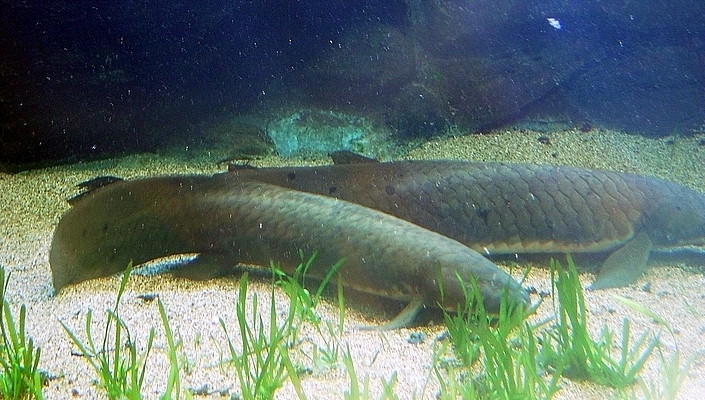
Lungfish are a grouping of freshwater fish that breathe air using lungs rather than gills (the Australian lungfish can as well 'breathe' using its gills). There are six known species of lungfish. They are found in Africa, Due south America and Australia.
Lungfish are large fish with long, eel-like bodies. The Queensland lungfish is thought to exist a 'living fossil', considering the species has existed for over 100 million years and has changed very little over that time.
Lynx

Lynxes are medium-sized wild cats in the genus Lynx . They have short tails and distinctive tufts of hair at the ends of their ears.
There are iv species of lynx: the Eurasian lynx, the Canada lynx, the Iberian lynx and the bobcat. The Eurasian lynx is the largest lynx, the bobcat the smallest.
- Y'all tin see a listing of every wild cat species (with pictures & facts) hither: Wild Cat Species List
Animals That First With L: Determination
We hope that this page has helped you discover some amazing animals beginning with l! Continue your exploration of the beast kingdom by checking out the following pages:
Detect animals beginning with …



























- Main list folio: Animals A to Z
- Animals: The Ultimate Guide To The Animal Kingdom
- Creature Classification
Source: https://www.activewild.com/animals-that-start-with-l/
Posted by: vallierekeisheiled.blogspot.com

0 Response to "What Is A Animal That Starts With L"
Post a Comment